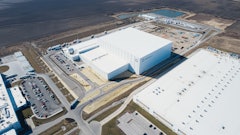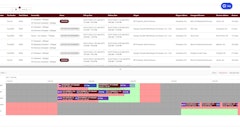
The Global Cold Chain Alliance (GCCA) has published the findings of its survey of business impacts of the COVID-19 virus on companies comprising the global cold chain. The report provides critical data about some of the ripple effects globally on social and economic activity of the cold chain industry. GCCA members store over 260 billion pounds of perishable foods each year, with an economic impact of $6.1 billion (est. revenue generated by the refrigerated warehousing industry) annually.
“This data provides important insights for the global cold chain industry,” says Jason Troendle, Director of Market Intelligence and Research at the Global Cold Chain Alliance and author of the Report. “There is no other research focused on the effects of the pandemic on our industry. We hope this information is helpful for all our members to understand what is happening across the industry, assist companies plan for future operational changes, and be prepared for other crises that may crop up.”
Key findings of this research include:
- Business challenges. The most frequently-selected challenge was supply chain disruptions (e.g. keeping up with demand surge, slowdowns in food service, production/manufacturing challenges) and selected by slightly over 50% of all respondents.
- Responses. The top COVID-19 response was to take extra measures to protect the workforce (e.g. staggered shifts, social distancing, remote working). The next-highest issues were maintaining overall business continuity and workforce morale.
- Impact on Revenue. Comparing actual Q1/Q2 revenue vs. Q1/Q2 pre-crisis revenue expectations, 54% of all respondents reported some type of a decrease, 11% saw no change, and 35% reported an increase in revenue. Respondents believe the next six months may look very similar to the past few months.
- Increased Costs. Approximately 80% of respondents indicated an increase in costs, with the most common uptick between 1-5% increase.
- Government Priorities. Respondents indicated access to PPE and cleaning as the top priorities they would like to see governments focused on, followed closely by financial support for employees as well as employers in the cold chain industry.
- Changing Business Operations. Measures taken to reduce person-to-person contact to slow the spread of the virus caused operational changes across the cold chain. While these measures were done out of necessity, the changes also provided an opportunity to adjust or try new processes or controls that if effective and efficient may remain in place after the pandemic from COVID-19 is over. 53% of respondents believe the percent of employees working remotely will increase. Pre-pandemic work-from-home rates averaged 4.5% of their workforce. That has increased to 19.8% of the workforce during the pandemic, and there is an expectation that about 10.6% of the workforce will continue to work remotely. This could lead to an increase of 6.1% of the workforce working remotely moving forward.
· Industry Trends. About three quarters of all respondents think that the pandemic will cause an increase in the growth rate of e-commerce/direct-to-consumer delivery of chilled and/or frozen product. Even stronger demand for data and predictive analytics is expected in the future, and respondents are optimistic that the growth rate of the industry as a whole will be even more significant because of the pandemic. Conversely, 73% of respondents believe that global trade opportunities will either decrease or remain the same relative to pre-COVID expectations.
· The above information is also by geographic region - Canada, Europe, Latin & South America, United States, and Other - and covered in the Report.


























